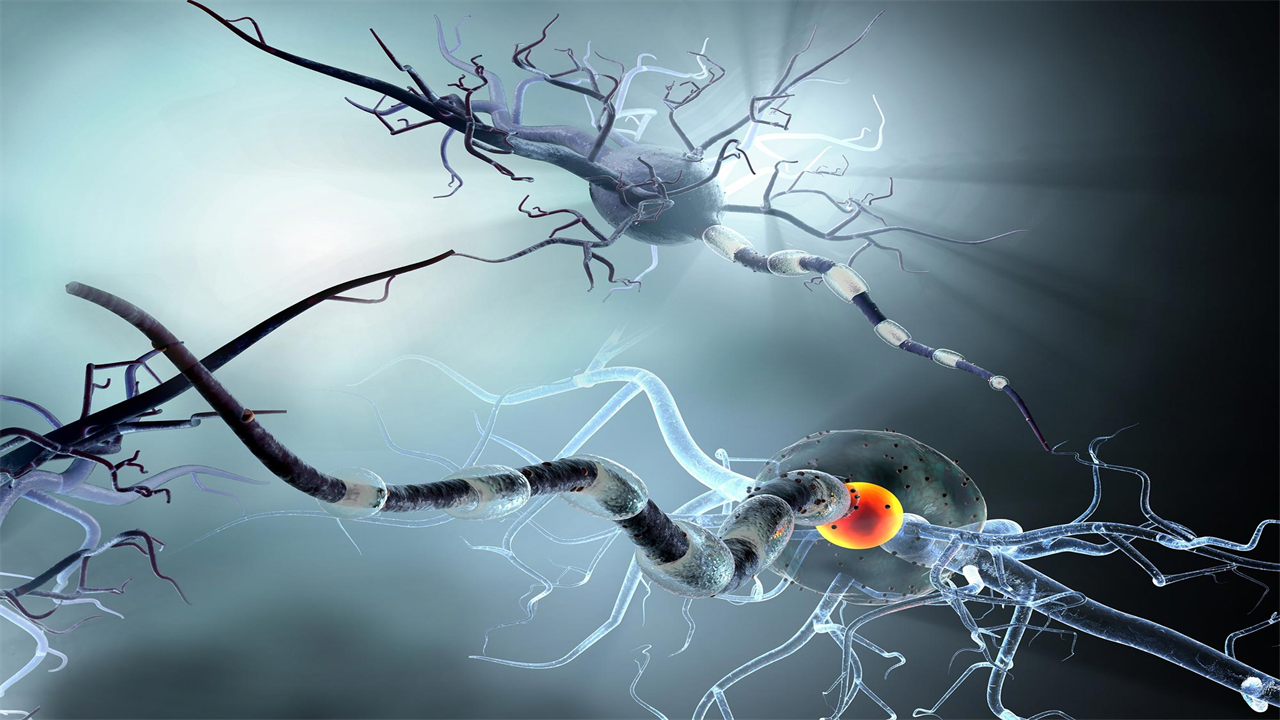How COVID-19 Worms Its Way Into the Brain – Explaining Baffling Neurological Symptoms
0 View
Share this Video
- Publish Date:
- 27 April, 2021
- Category:
- Covid
- Video License
- Standard License
- Imported From:
- Youtube
Tags

Research helps explain baffling neurological symptoms – and why they are so unpredictable.
New research offers a close-up of how SARS-CoV-2, the virus that causes COVID-19, can spread to the brain. The study helps explain the alarming array of neurological symptoms reported in some patients with COVID-19, as well as why some patients have severe neurological effects and others none at all.
The researchers report evidence that SARS-CoV-2 can infect both the nerve cells that power our brains (neurons) and the cells in the brain and spinal cord that support and protect neurons (astrocytes).
A single astrocyte showing the expression of the SARS-CoV-2 receptor protein ACE2 in red. Credit: Ricardo Costa, LSUHS
“Our findings suggest that astrocytes are a pathway through which COVID-19 causes neurological damage,” said Ricardo Costa, PhD, a postdoctoral researcher at Louisiana State University (LSU) Health Shreveport and the study’s lead author. “This could explain many of the neurological symptoms seen in COVID-19 patients, including loss of sense of smell and taste, disorientation, psychosis and stroke.”
Costa will present the research at the American Physiological Society’s annual meeting at the Experimental Biology (EB) 2021 meeting, which will be held almost April 27-30. The study is led by Diana Cruz-Topete, assistant professor of molecular and cellular biology at LSU Health Shreveport, and includes collaborators Oscar Gomez-Torres, PhD, and Emma Burgos-Ramos, PhD, from Universidad de Castilla-La Mancha in Spain.
A group of neurons (blue) and the dendrites that connect them (green). The ACE2 receptor (in red) is present in the main neuronal body. Credit: Ricardo Costa, LSUHS; original cells donated by Lynn Harrison, LSUHS
In the respiratory system, SARS-CoV-2 is known to infect a person’s cells by grasping proteins on the cell surface called angiotensin converting enzyme-2 (ACE2) receptors. It is unclear whether brain cells have this receptor.
For the study, Costa and colleagues examined RNA and proteins to determine whether cell cultures of human astrocytes and neurons expressed ACE2. They then exposed the cells to a version of the SARS-CoV-2 virus that had been modified for safe use by researchers. The studies confirmed that both astrocytes and neurons express the ACE2 receptor and that both cell types can become infected with SARS-CoV-2, although astrocytes are less likely to become infected.
A single astrocyte infected with a modified version of SARS-CoV-2. The virus was modified to express a green fluorescent protein upon successful infection. Nearby astrocytes (not visible) were not infected. Credit: Ricardo Costa, LSUHS
Astrocytes are the main gateway to the brain, responsible for transporting nutrients from the bloodstream to neurons while keeping harmful particles out. By resisting infection, astrocytes can help keep SARS-CoV-2 out of the brain, but once infected, they can easily pass the virus to many neurons, researchers said.
“While astrocytes show a higher resistance to infection, neurons appear to be more sensitive,” said Costa. “This suggests that just a few astrocytes that become infected may be enough to quickly spread the infection to neurons and multiply rapidly. These observations could explain why, while some patients do not have neurological symptoms, others appear to have severe symptoms. “
Meeting: Experimental Biology 2021










